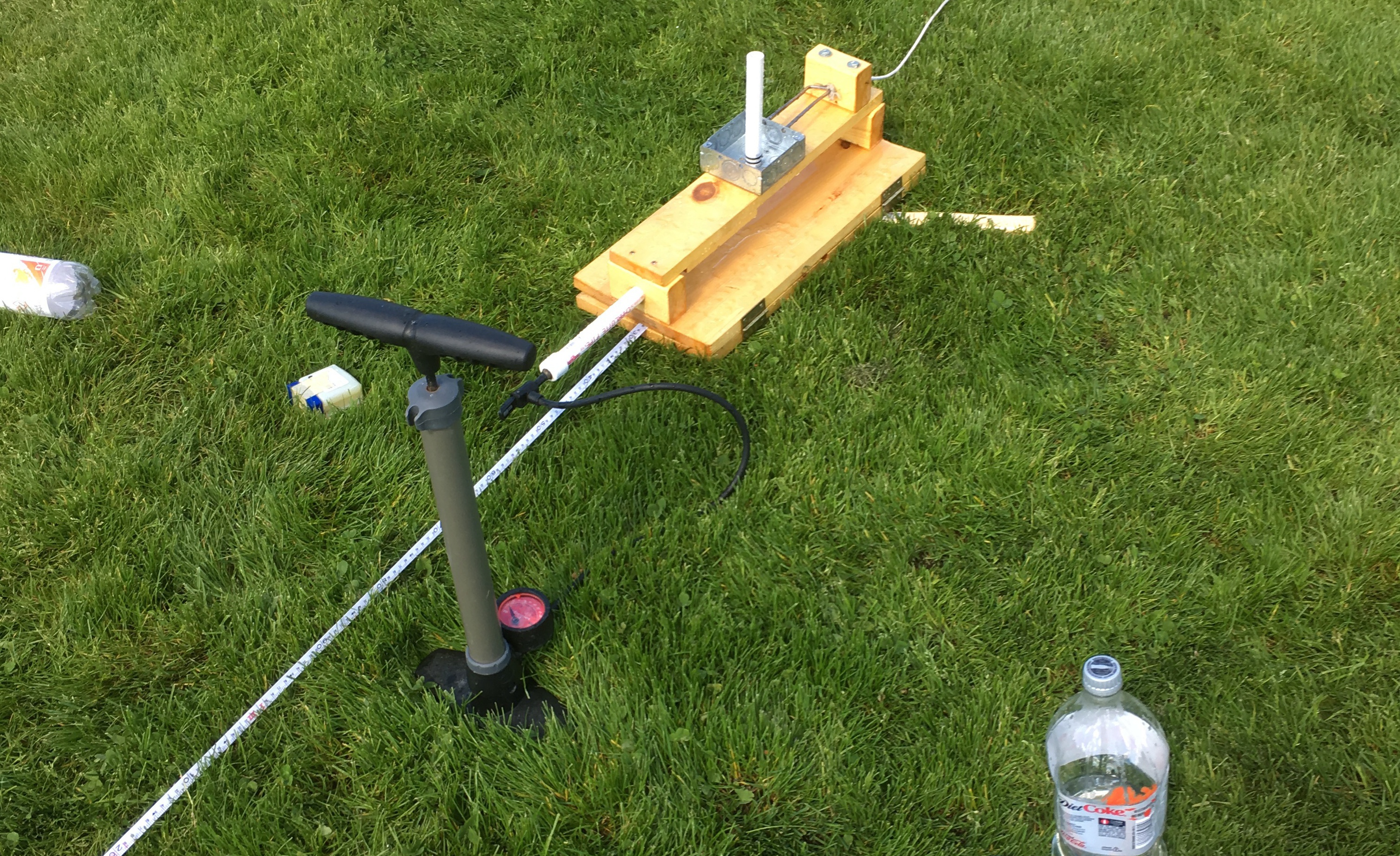[huge_it_gallery id=”3″]
On May 10, all students in the Evolutions program launched homemade water bottle rockets into space. Students created these contraptions from scratch and strived to fit criteria that would determine if their missions were a success.
In order to construct a successful rocket, students worked in teams of three to create a sturdy and agile project that could either reach a certain height when launched or keep an egg inside it from cracking.
Evolutions teachers decided on this project after being influenced by other classes who have experimented with dropping an egg from a tall building and trying not to crack it.
“This is our first year doing this project, but other people in school have done similar experiments, and this fit well with what we were learning, so we decided to do it,” said Mr. Lawrence Lovett, the Evolutions STEM teacher.
This year’s Evolutions curriculum included four units: people, land, water, and air. This project fell into the air category and acted as an important part of those aspects of class for the students.
One element that made this project unique was how different every group’s rocket turned out. Some used one liter water bottles as opposed to two, with different amounts of water in each, and some people added wings and a cone with cardboard or cardstock.
“When we made our rocket, our group tried out a couple different designs using two liter bottles, and we also experimented with different amounts of water in the bottle until we got it right. The whole thing ended up being a success because our egg landed without cracking,” Evolutions student Calvin Lindquist ’18 said after launching his project.
Each group acted as scientists when creating their rockets and called the eggs they were hoping to keep from cracking “eggstanauts”. To add to the silliness factor of the event, there was topical music playing during the launches, such as “Life on Mars?” by David Bowie, and there were plenty of snacks provided for the many spectators to enjoy.
Following the theme of space, before each group launched their rockets, a team member would recite a dedication speech about why this launch was important and would help mankind.
“Welcome, national leaders, fellow scientists, brave explorers, and distinguished guests, both present and observing from afar. Today marks a great achievement, not for any single nation, but for all of humanity,” Evolutions student Will Edwards ’17 said at the beginning of his speech.
In order to launch the rockets, members of the Evolutions program set up a launcher made from a bike pump.
“The pump adds pressure to the air inside the bottle while the bottle is held in place, and when it’s released, the pressure pushes the water out of the bottle, causing it to fly up,” Lovett explained.
After their launches, the students wrote news stories about their experiences as scientists and how their rockets did. These stories helped incorporate other aspects of the Evolutions curriculum into this one event and provided an opportunity for Bradford editors to share their expertise and gain valuable experience.
“It was very interesting to help the Evolutions kids write news stories; it was awesome to be able to help this unique event incorporate the media,” said Kate Waisel ’20, the News Editor on the Bradford.

